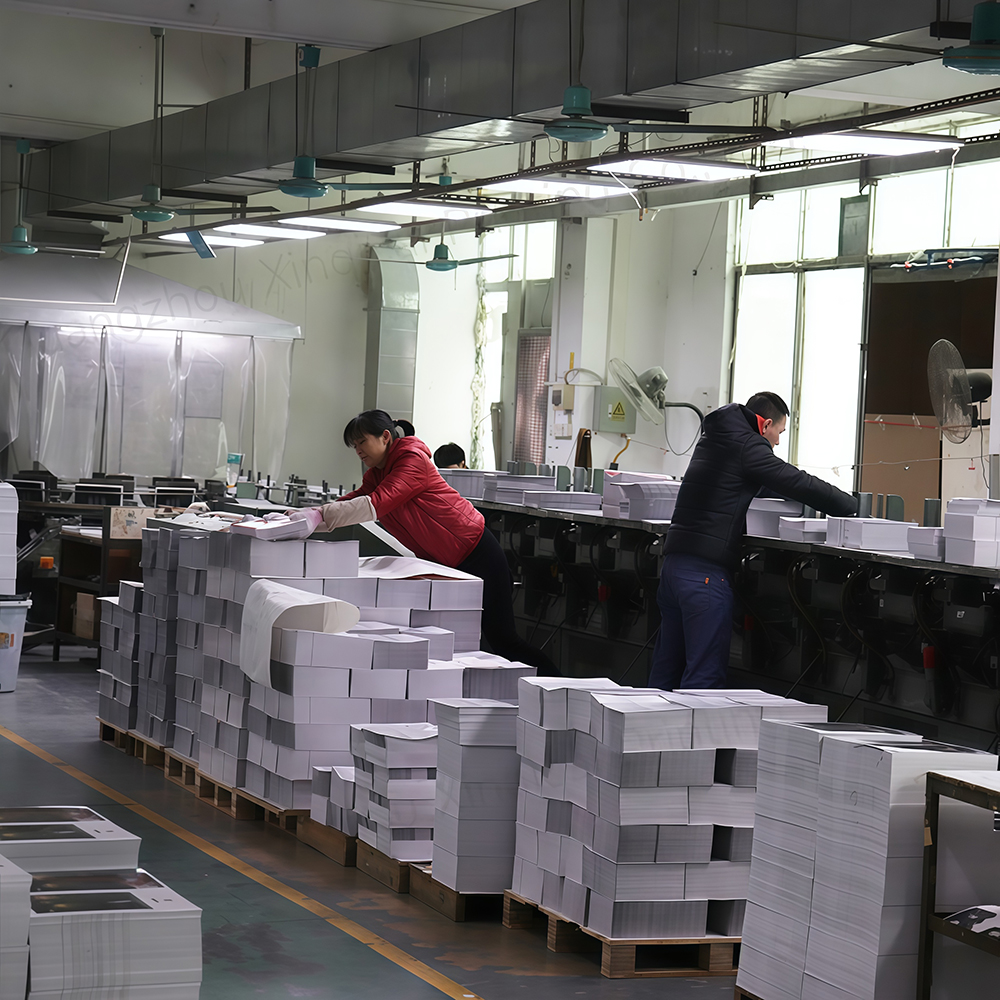Maintaining color consistency in daily printing production has always been a challenge for printing production personnel. Many printing companies have experienced customer complaints and even product returns due to color variations in printed products, resulting in serious quality issues. Therefore, this article will explore how to effectively control product color consistency during the printing process.

Establishing a Comprehensive Color Management System
It is well known that it is impossible to completely eliminate color variation during the printing process. The key lies in controlling color variation within a reasonable range. The first step in ensuring color consistency in the printing process is to establish a comprehensive color management system that ensures that operators understand the standards for qualified products. This includes the following two key points:
1. Determine the upper and lower color limits with the customer
When producing a product for the first time, we should establish the upper and lower color standards for the product. After the customer seals the sample, it will be designated as the "standard sample." Subsequent production will be based on the standard colors of the standard sample (which can also be the first batch of production samples), and strict color fluctuations must not exceed the upper and lower standard limits. In other words, confirming the color difference standard range with the customer in advance ensures product color consistency while providing production personnel with a reasonable color fluctuation range, making product color standards more operational. Do not simply follow the batch sample during each production run. This will result in greater color variation as the number of printed batches increases, and even a slight discrepancy can lead to significant errors.
Also, it is important to regularly replace the "standard sample" used by the customer to seal the sample to prevent discrepancies between the standard sample and the actual printed product over time.
2. Improve the first and last piece sample approval and inspection system
To further ensure adherence to color standards, product color inspection should be included in the "First and Last Piece Inspection System" and "Inspection Quality Records." This will facilitate workshop management in controlling product color variations and rejecting unsuitable products. Furthermore, workshop management and operators should strengthen inspections and spot checks to ensure that products exceeding the acceptable color range are promptly identified and addressed during the production process.
With the advancement of printing inspection technology, the accuracy of color difference detection equipment has significantly improved. Printing companies with the necessary conditions can implement digital color difference management by introducing relevant color difference control equipment.
Equipped with Standard Printing Light Sources
Some printing companies fail to use standard printing light sources, which poses a risk to color consistency in printed products. The color of products seen under nighttime lighting differs significantly from that seen under daylight during the daytime shift, which can easily lead to color discrepancies in printed products. Therefore, it is recommended that printing shops use standard printing light sources and, if necessary, equip standard light boxes.
Ensuring Printing Ink Quality
Printing companies sometimes encounter situations where the color of printed products gradually changes after being stored at a customer's location, even though the same phenomenon did not occur with previous batches. This is typically due to the use of expired ink. Standard inks typically have a shelf life of one year, and using expired ink can easily cause discoloration in printed products. Therefore, it is important to pay attention to the expiration date when using ink and adhere to the first-in-first-out principle. Furthermore, during the printing process, it is important to pay attention to the amount of ink additives used. Excessive use of ink additives can also cause color discrepancies in the printed ink. Therefore, when using various ink additives, it is best to communicate with the ink supplier to determine the correct additive ratio.
Focus on Spot Color Ink Proportions and Information Transmission
The printing industry often requires the preparation of spot color inks. However, when preparing spot color inks, print shops often encounter situations where the color of the inks they prepare differs significantly from the sample color. The primary cause of this problem is an incorrect ink ratio. Spot color inks are made from multiple process inks, most of which are Pantone-based. Therefore, when preparing spot color inks, we often follow the ratios specified on the Pantone color chart. However, it should be noted that the ink ratios on the Pantone color chart are not always completely accurate; slight discrepancies often occur. This requires a certain level of experience and a high sensitivity to ink color. This requires continuous learning and practice, as the operator accumulates experience in spot color ink preparation, improves color sensitivity, and achieves proficiency in ink preparation. It is important to note that not all process inks are based on the Pantone color chart. When encountering process inks that are not Pantone-based, it is not advisable to rely on the ink ratios on the Pantone color chart as a guideline. Otherwise, it will be difficult to prepare the desired ink color.
In addition, many printing companies use electronic scales to ensure the accuracy of spot color ink mixes, which is recommended (it's important to note that these scales should be calibrated regularly). Standardization is a key measure for industrial production progress. Our practice is to have operators record their ink mixes on process sheets and quality records when first mixing spot color inks. This provides baseline data for subsequent mixes and ensures color consistency between different shifts and operators.
Making the Right Printing Plate
We often encounter situations where the color of the product printed during follow-up samples differs significantly from the sample color provided by the customer. This is often caused by differences in dot density and size between the printing plate and the sample. We recommend the following steps to correct this problem:
First, use a dedicated screen ruler to measure the sample screen count to ensure that the printing plate screen count matches the sample screen count. This step is crucial.
Second, use a magnifying glass to observe whether the dot sizes on each color printing plate match the dot sizes of the corresponding colors in the sample. If not, adjust them to be consistent or approximately the same. It's important to note that since dots increase in size after printing, the dot size set during platemaking should be slightly smaller than that on the sample.
Finally, observe whether the hue of the printing ink matches the hue of the sample ink.
Generally speaking, if the above three points are met, the color of the printed product will be largely consistent with the customer's sample, with minimal deviation.
Fully evaluate the impact of the surface treatment process on the color of the printed product.
During the printing process, it's common to encounter situations where the color of the printed product is very close to the sample during printing, but the color changes significantly after lamination, especially after matte lamination. This difference is particularly pronounced when printing dark blue and red and yellow colors. It's best to perform a lamination test before production, adjust the print color based on the lamination results, and save the unlaminated sample for comparison during subsequent production. Furthermore, the calendering process significantly affects dark blue color patches, so this should be considered in advance during printing.
Understanding the Color Change Patterns of Special Colors After Drying
Printing colors are ever-changing. Some colors may appear very close to the sample color at the beginning of printing, but deviate significantly from the sample color after drying. This is especially true when printing with dark blue inks such as Radiant Blue, which can exhibit a noticeable reddish hue after drying. This is crucial for printing.
Furthermore, metallic inks such as gold and silver can also exhibit color changes after drying, due to their composition. Furthermore, the color of printed products is significantly affected by viewing angle. Therefore, when printing with these inks, it is important to understand the viewing environment of the customer, whether it is sunlight or under lighting, and strive to achieve consistency.
The printing process is a dynamic equilibrium, and every shutdown and restart of the machine will cause color variations. Therefore, consistent color is a key quality indicator. Many of these tips are the result of years of experience gained in the printing process. We hope that these insights will help industry professionals better control printed color and create more personalized and attractive products.

